- Home
- Robert A. Heinlein
Off The Main Sequence Page 2
Off The Main Sequence Read online
Page 2
“Light" and “Lifeline" were set in the near future — as we now know, a future largely imagined in For Us, the Living, in which global wars of the 1940s isolate the United States from Europe, with the U.S. developing startling new technologies such as free and unlimited power, rolling roads, and “antipodal" rockets. The United States reaches the moon in the late twentieth century, and begins to colonize the solar system. But a fundamentalist religious dictatorship fomented by a television evangelist named Nehemiah Scudder leads to a new “dark age" in the U.S., thrown off only by a revolution late in the twenty-first century, followed by the “first mature human civilization."
Using the model of Sinclair Lewis, who created maps and character biographies for his fictional state of Zenith, U.S.A., Heinlein designed his own “Future History" chart, a wall-sized document that showed characters, inventions, and social upheavals to come — penciling the titles of stories where they belonged. “Lifeline" was set in the present." 'Let There by Light’" took place around in 1980.
But not all of his stories fit that chart. On the heels of his success with “Lifeline" and another Future History tale, “Misfit," Heinlein composed a short-short written at the request of a young SF fan named Ray Bradbury, for publication in his fanzine Futuria Fantasia. Originally titled “Heil!", it would languish in obscurity for thirty years, until reprinted in the Sam Moskowitz anthology Futures to Tomorrow (1970). Heinlein himself collected it under a new title “Successful Operation", a decade after that.
In that magical summer of 1939, Heinlein composed several fantasies (“Pied Piper"), political satires (“Beyond Doubt"), and even screwball comedies (“—And He Built a Crooked House —").
Campbell rejected most of these early attempts. The fantasies weren’t quite right for his fantasy publication, Unknown, and the stories aimed at Astounding had other problems:" 'Let There Be Light’" was considered too racy. “The science fiction readers have shown a consistent distaste for … feminine scenery in science-fiction stories," Campbell wrote in his rejection letter. Of Heinlein’s smart-mouth, sexy heroine, Mary Lou Martin, he said, “She’s much more nicely handled than the average woman in science-fiction, but I’m still afraid of her.")
“Beyond Doubt" is interesting because it’s Heinlein’s only formal fictional collaboration. Elma Wentz was not only the wife of Heinlein’s EPIC friend, Roby Wentz, she was Upton Sinclair’s secretary. On a dare at a party, Heinlein composed a three-page story outline on the spot … Wentz then wrote a first draft, which Heinlein later revised and cut, then sold.
What propelled Heinlein to the first rank of SF writers was his clear storytelling style, characters whose psychological makeup was more mature and complex, and settings that felt “real", Before Heinlein, most SF writers were either scientists or engineers by profession .. professional pulp writers translating other stories into SF settings … or brilliant teenagers who, for all their nascent storytelling skills, still lived with their parents.
Heinlein’s engineering training gave astonishing verisimilitude to his imagined gadgets. His experiences in the military, in politics, and business made his future worlds more believable. (He was undoubtedly the first SF writer to use a notary public in a story.) He was familiar with Boy Scout camps and fraternal lodges, with smoke-filled political meeting rooms and Hollywood parties. And he had apparently read most of the SF published to that time, from Wells to the authors who came to prominence in the pulps, notably E. E. Smith, Murray Leinster, and Campbell himself.
Even in person he was not the typical science fiction writer. Tall, formal, “theatrically handsome" (in the words of L. Sprague de Camp), he was a compelling presence, by turns gracious and icy. He quickly claimed a dominant role in the Los Angeles SF writing community, holding monthly salons at his home in Laurel Canyon for what he called the Manana Literary Society, a group intended “to permit young writers to talk out their stories to each other in order to get them off their minds and thereby save themselves the trouble of writing them down."
MLS was more than a club, however. It was a way for Heinlein to communicate his — and Campbell’s — ideas on their new approach to SF and fantasy. It also allowed Heinlein, who often dismissed his own stories as “hackwork," and made no secret of his plans to give up writing once he was out of debt, to recruit new writers for Campbell against the day he would retire. Even other professional writers came under Heinlein’s spell, too: Edmond Hamilton, Henry Kuttner, and Jack Williamson. “I used to feel he was the most truly civilized person I’d ever known," Williamson wrote years later.
As several stories in this collection show, Heinlein also had a mystical streak and was fascinated by ideas outside the bounds of known science. He was familiar with the pioneering parapsychological research of J. B. Rhine … the memory training of Samuel Renshaw … the unexplained events collected in the books of Charles Fort … and especially Alfred Korzybski’s General Semantics. And, of course (as many of his titles and character names will show), the King James Bible as read by Bible Belt Methodists.
Feeling bound by the Future History — he would alter call it a “Procrustean Bed" — he would unleash his wilder speculations and fantasy in stories such as “Elsewhen" and especially “Lost Legacy."
In the summer of 1940, emboldened by his success, his mortgage paid off, and planning to attend the Democratic National Convention in Chicago, Heinlein and Leslyn traveled east, where Heinlein met Campbell face-to-face.
During their discussions, Heinlein showed Campbell the Future History chart. Campbell wanted more of those stories. Heinlein was happy to write them, but on one condition: he would write for Campbell until the editor bounced a story. “Now that I know you personally," he says he told Campbell, “it would be too traumatic to have you reject one."
So he and Campbell concocted a new pen name that Heinlein could us on “non-Future History" work published in Astounding — “Anson MacDonald," using Heinlein’s own middle name and Leslyn’s maiden name.
The first “Anson MacDonald" story was a commission from Campbell, who had an unfinished novella in his files about an Asian invasion of the United States. He told Heinlein the story in person. Heinlein wrote the text in a few weeks, as he and Leslyn traveled to Chicago for the Democratic National Convention. It was during this trip that he also wrote one of his most daring fantasies, “They."
Returning to Los Angeles, energized by Campbell’s encouragement, and as much creative freedom as a writer could hope to have, Heinlein plunged into a year of intense writing that produced the Anson MacDonald stories “Solution Unsatisfactory", “By His Bootstraps", “Universe", and “Common Sense", “—We Also Walk Dogs —", and several others, in addition to the Future History novel Methuselah’s Children.
He also began to sell the stories Campbell had rejected, using the pen name “Lyle Monroe", to such lower-paying markets as Super Science and Future. (Heinlein had invented it in 1939 — using names from his mother’s side of the family — for Bradbury’s fanzine, and other fan-related pieces over the next year. He bragged to Campbell that “Monroe" had “a phony address, fully divorced from the RAH persona.")
This magical year culminated in Heinlein’s appearance at the third World Science Fiction Convention in Denver on the July 4th weekend, where he delivered an address called “The Discovery of the Future."
Returning to Los Angeles, he wrote a new “Anson MacDonald" story called “Creation Took Eight Days", a dark drama drawing on the works of Charles Fort, and sent it to Campbell —
— Who rejected it. Heinlein reported an initial disappointment, then glee. “School was out." Free to return to his gentlemanly ways, to contemplate such arcane works as a book on monetary theory, he spent several days on long-delayed household construction projects, then found himself feeling “jittery" and absentminded … signs, he thought, of a recurrence of T.B.
When Campbell learned that Heinlein had “retired," he suggested minor changes in “Creation". Sitting down to make the re
visions, Heinlein discovered that his symptoms disappeared. “I was hooked on writing."
“Creation Took Eight Days" became “Goldfish Bowl".
Heinlein immediately plunged into a new “Anson MacDonald" serial, Beyond This Horizon, perhaps his most heartfelt work, in which he returned to the utopian methods of his failed For Us, the Living, but with the experience of two years of commercial writing. He pressed to complete Horizon by early 1941 (having predicted a Japanese attack on Pearl Harbor for Sunday, December 7, in a letter to Campbell mailed a week before that date.)
Heinlein presented himself to the navy at San Pedro Monday, December 9, 1941, volunteering for a return to active duty. In this he was to be disappointed — he was judged too disabled even for a staff position. Further inquiries went nowhere. The navy did not want him in uniform.
A former class-and ship-mate, Lt. Cmdr. Albert B. “Buddy" Scoles, had been assigned as head of the Naval Air Material Center in Philadelphia. He hired Heinlein as an aeronautical engineer.
While staying with Campbell in New Jersey, just prior to reporting to Philadelphia, Heinlein wrote his last two pre-war stories. (Ne needed money to pay for an operation on his wife, Leslyn.)
For the next three years, Heinlein worked on such mundane but important projects as de-icing for high-altitude cockpit windows and pressure suits. He served an important role as an intermediary between military and civilian personnel at the plant. He recruited talented engineers and scientists such as L. Sprague de Camp and Isaac Asimov, from the SF world, and other young engineers who went on to work on Project Apollo twenty years later.
His writing was limited to letters, occasional book reviews for Campbell, and technical reports.
The detonation of two atomic bombs over Japan in August 1945 brought a quick end to Heinlein’s engineering career. Within days of the Japanese surrender, he and Leslyn were on their way back to Los Angeles — including a detour to attempt to visit the Trinity Site in New Mexico. (They were unable to reach it.)
The existence of the atomic bomb — and the looming nuclear stalemate he had foreseen in “Solution Unsatisfactory" — hit Heinlein as hard as Pearl Harbor. The rules of conventional warfare no longer applied. Countries could now rain death on cities from across an ocean.
Heinlein decided that it was his mission to use his writing skills to “help explain the world of atomic power" to the public. He would no longer write pulp science fiction — the name “Anson MacDonald" was retired.
Now Heinlein would write articles for slick magazines … a handbook on politics for post-war leaders … young adult fiction for a new generation of Americans.
During his time in Philadelphia, Westminster Press, a well-known publisher of juvenile books, had solicited a science fiction novel from Heinlein, only to reject it in March 1946 as too “far fetched." By now, however, Heinlein was represented by agent Lurton Blassingame, who sold Young Atomic Engineers to the prestigious house of Charles Scribner’s and Sons, where it was published as Rocketship “Galileo", becoming the first of a fabulously successful series of books for boys that ran for the next twelve years.
By 1946, Heinlein had returned to writing adult fiction — but not for the SF pulps. His first post-war short story wasn’t even SF, but a mystery eventually published as “They Do It with Mirrors" (under the name “Simon York").
Heinlein’s post-war SF shorts were aimed at a higher market — the Saturday Evening Post. In October 1946, Blassingame sold Heinlein’s “The Green Hills of Earth" there, the first of four to appear in its pages. In all, there would be ten Heinlein works in the slicks over the next few years, including “Water Is for Washing", in Argosy.
Not all of his stories hit the mark, however. For one thing, the slick magazines rarely used science fiction. So stories like “Free Men", “Columbus Was A Dope", “On the Slopes of Vesuvious", and “Jerry Was a Man" were laid off on pulps like Thrilling Wonder Stories (where “Columbus" marked the last appearance of Heinlein’s “Lyle Monroe" pen name) or went into the trunk for decades.
Heinlein’s growing popularity as a writer of juveniles led to a contribution to Boys’ Life. “Nothing Ever Happens on the Moon", beginning a fruitful association with that magazine that persisted for two decades.
In the fall of 1948, Astounding editor John Campbell published a humorous letter of comment from a fan named Richard Hoen — rating the stories of the November 1949 issue of the magazine, featuring purported works by Theodore Sturgeon, A. E. van Vogt, Lester del Rey, and L. Sprague de Camp, and the serial novel “Gulf" by “Anson MacDonald."
At this time, Heinlein and Campbell were occasionally chatting long-distance via ham radio, Heinlein from his home in Colorado Springs, Campbell from New Jersey. It was Heinlein who jokingly suggested to Campbell that he try to make the November 1949 issue a reality, offering to write a story titled “Gulf". Campbell was taken with the idea and set out to make it happen.
Heinlein and his wife, Virginia, whom he had married in October 1948, following a divorce from Leslyn, brainstormed several ideas. Her first suggestion — “Why don’t you write a Mowgli stroy?"
Heinlein was so fired up by the SF possibility of a human raised by worlves … or Martians … that he disappeared into his study and wrote several single-spaced pages of notes. He showed the idea to Campbell, who agreed that it was fascinating, but too big for a relatively short serial in his magazine. (Written over the course of a dozen years, the Mowgli story was eventually published in 1961 as Stranger in a Strange Land, Heinlein’s most famous work.)
Setting the notes aside, Heinlein found another story to fit the title “Gulf" — the gulf between ordinary humans, and the “new men" who will ultimately replace them.
The story and theme remained close to Heinlein’s heart — he would resurrect the concept and even plot points for a failed 1964 television project called XXII Century, and would eventually write a sequel novel, Friday (1982).
Shortly after the completion of “Gulf", Heinlein and Virginia returned to Hollywood; a script he had written the year before had found a producer (George Pal) and funding. It was to be filmed as Destination Moon, with Heinlein on set as technical adviser.
Released in June 1950, Destination Moon was the first movie to portray space travel realistically. Heinlein was asked to “novelize" the script, turning it into the novelette of the same title published in Short Story magazine.
By this time, Heinlein and Virginia had returned to Colorado Springs, where the designed and built a futuristic home near the Broadmoor hotel. Heinlein needed cash for the construction, which thanks to materials shortages caused by the Korean War, went wildly over his budget. He returned to writing adult novels (The Puppet Masters) as well as his last flurry of short stories.
All three showed Heinlein at the peak of his storytelling powers, and touched on concepts dear to him: the brutal realities of space flight that resulted in heartbreaking human sacrifice (“Sky Lift") … the uses military minds would make of ESP in the Cold War (“Project Nightmare") … and the utter futility of human aspirations in the face of the universe’s cold mathematics (“The Year of the Jackpot").
Although he had great success in selling to slick markets, he and Blassingame could see that the market was disappearing. And those fewer outlets were not publishing science fiction: These stories earned top rates from the best SF magazines, such as Amazing and Galaxy, but these were no longer competitive with Heinlein’s earnings from novels, the Scribner juveniles, and television.
The whole world of professional storytelling was changing, and Heinlein changed with it. From pure pulp markets he expanded to the slick magazines, to books from small presses and major publishers, to mass market paperbacks, to film and television.
Throughout the late 1950s, he continued to write the occasional short story. But, pressed by commitments to Scribner’s, Doubleday, and the SF presses, not to mention requests for magazine articles, speeches, and television scripts, there was simply very little time. �
��A Tenderfoot in Space" was written because the editor of Boys’ Life asked for more from Heinlein.
One day in the summer of 1958, taking a break from the difficult novel that would become Stranger in a Strange Land, Heinlein composed, in a single day, the marvelous “—All You Zombies —". In a letter to Blassingame, he called it “the furthest south in time travel stories." It’s hard to see how a character could be more knotted up in time than Heinlein’s “Jane."
Intended for the “fancy rates" of Playboy magazine, it was rejected, but quickly bought by The Magazine of Fantasy & Science Fiction.
With the exception of a piece commissioned by an ad agency in 1962, Heinlein’s career as a writer of short fiction was over.
His greatest acclaim was still to come, of course. Stranger in a Strange Land would be published in 1961 and ultimately be known as one of the most popular and controversial novels of the decade. He would battle ill health and too much acclaim. He would travel the world, and hole up behind an electrified “hippie-proof" fence. He would become a hero of the counterculture of the 1960s, and the emerging “new right" (thanks to the Libertarian ideas in his 1966 novel, The Moon Is a Harsh Mistress).
He would struggle artistically, but he would continue publishing until 1987, eight months before his death in Carmel, California, from emphysema on May 9. 1988, widely hailed as the most influential and accomplished science fiction writers since Wells, and as the author of these dark, funny, disturbing, intriguing stories written and published “off the main sequence."
— Los Angeles, 2005
Editor’s Note
by Andrew Wheeler
This book was conceived as a companion to The Past Through Tomorrow, the monumental collection of Heinlein’s “Future History" stories. Because of this, Off the Main Sequence contains none of the stories in the earlier book, though it does include a few stories left out of Past — such as" 'Let There Be Light’" — that are generally considered part of the “Future History."

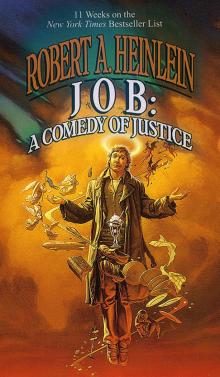 Job: A Comedy of Justice
Job: A Comedy of Justice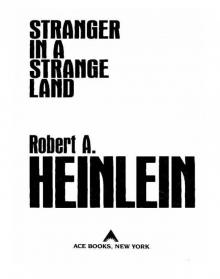 Stranger in a Strange Land
Stranger in a Strange Land The Worlds Of Robert A Heinlein
The Worlds Of Robert A Heinlein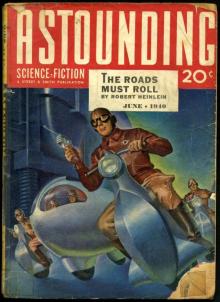 The Roads Must Roll
The Roads Must Roll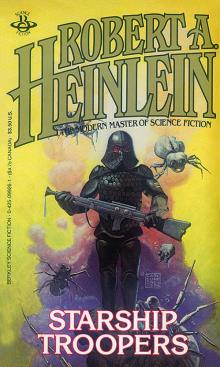 Starship Troopers
Starship Troopers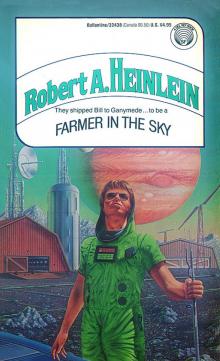 Farmer in the Sky
Farmer in the Sky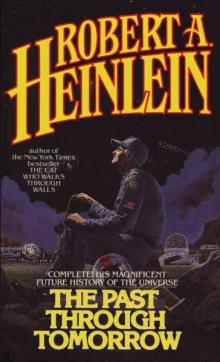 The Past Through Tomorrow
The Past Through Tomorrow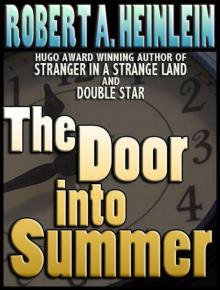 The Door Into Summer
The Door Into Summer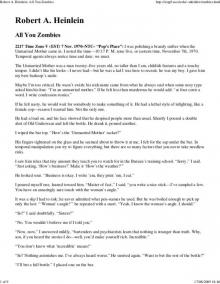 All You Zombies
All You Zombies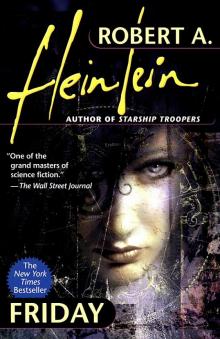 Friday
Friday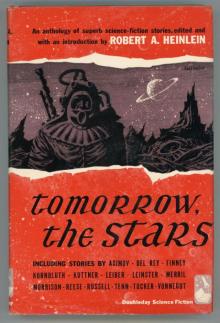 Tomorrow, the Stars
Tomorrow, the Stars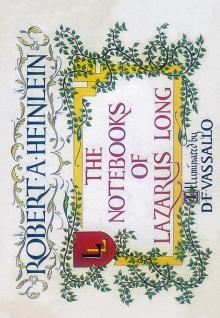 The Notebooks of Lazarus Long
The Notebooks of Lazarus Long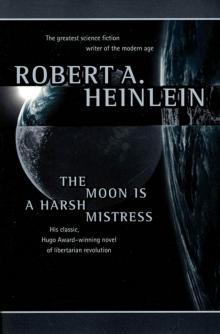 The Moon Is a Harsh Mistress
The Moon Is a Harsh Mistress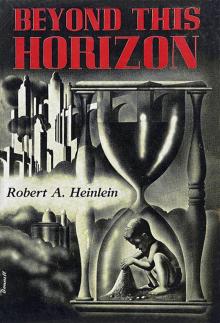 Beyond This Horizon
Beyond This Horizon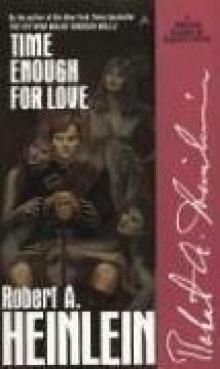 Time Enough for Love
Time Enough for Love Tunnel in the Sky
Tunnel in the Sky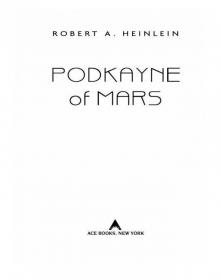 Podkayne of Mars
Podkayne of Mars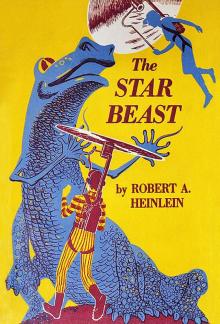 The Star Beast
The Star Beast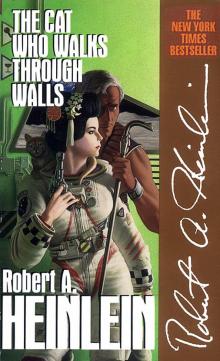 The Cat Who Walks Through Walls
The Cat Who Walks Through Walls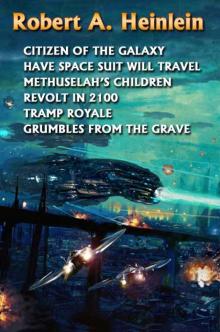 Grumbles From the Grave
Grumbles From the Grave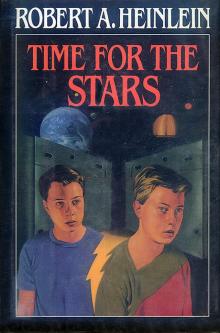 Time for the Stars
Time for the Stars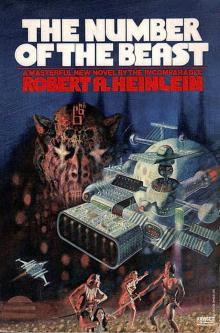 The Number of the Beast
The Number of the Beast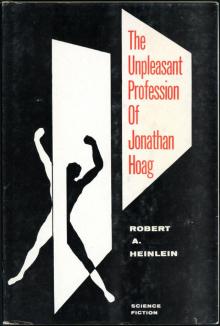 The Unpleasant Profession of Jonathan Hoag
The Unpleasant Profession of Jonathan Hoag Sixth Column
Sixth Column To Sail Beyond the Sunset
To Sail Beyond the Sunset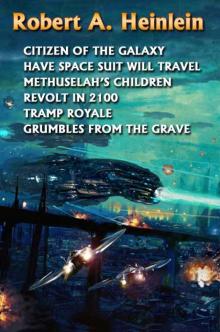 Revolt in 2100
Revolt in 2100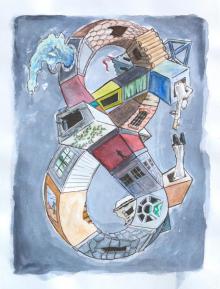 And He Built a Crooked House
And He Built a Crooked House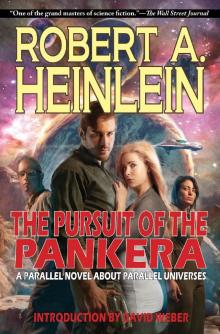 The Pursuit of the Pankera: A Parallel Novel About Parallel Universes
The Pursuit of the Pankera: A Parallel Novel About Parallel Universes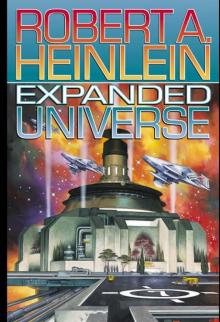 Expanded Universe
Expanded Universe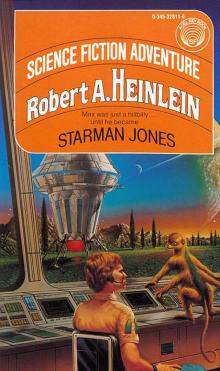 Starman Jones
Starman Jones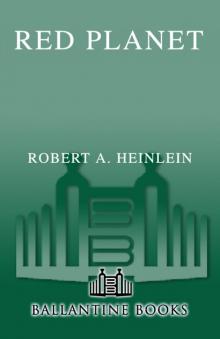 Red Planet
Red Planet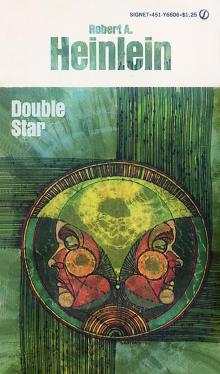 Double Star
Double Star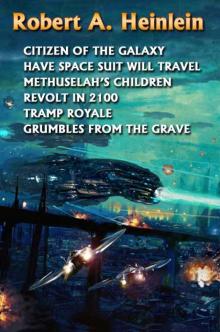 Citizen of the Galaxy
Citizen of the Galaxy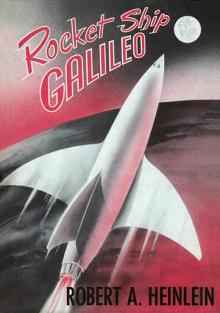 Rocket Ship Galileo
Rocket Ship Galileo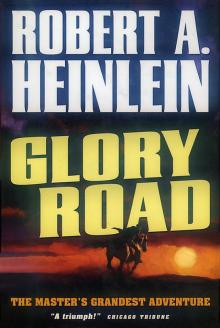 Glory Road
Glory Road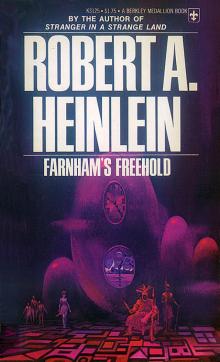 Farnham's Freehold
Farnham's Freehold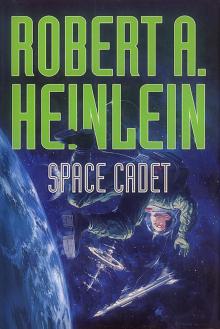 Space Cadet
Space Cadet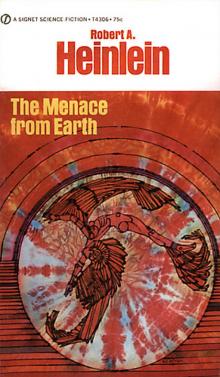 The Menace From Earth ssc
The Menace From Earth ssc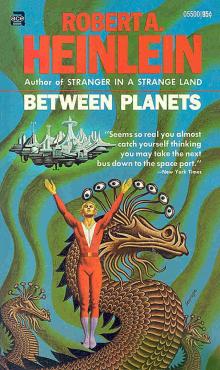 Between Planets
Between Planets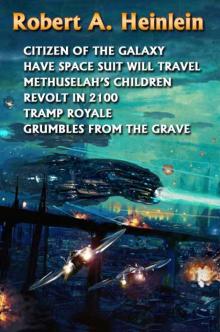 Methuselah's Children
Methuselah's Children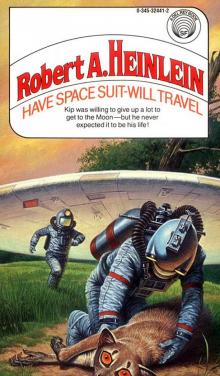 Have Space Suit—Will Travel
Have Space Suit—Will Travel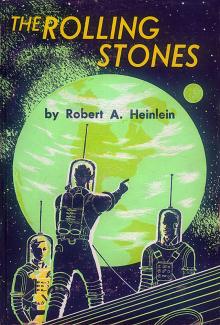 The Rolling Stones
The Rolling Stones Door Into Summer
Door Into Summer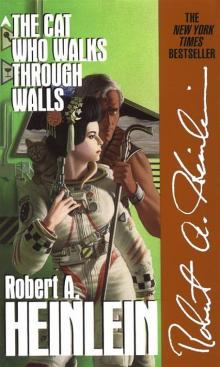 The Cat Who Walked Through Walls
The Cat Who Walked Through Walls Magic, Inc
Magic, Inc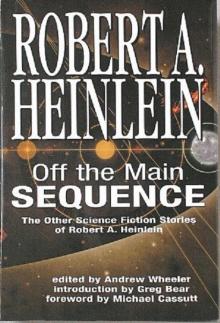 Off The Main Sequence
Off The Main Sequence Pied Piper
Pied Piper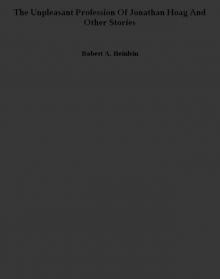 The Unpleasant Profession Of Jonathan Hoag And Other Stories
The Unpleasant Profession Of Jonathan Hoag And Other Stories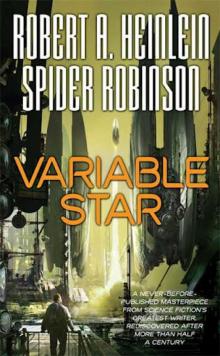 Variable Star
Variable Star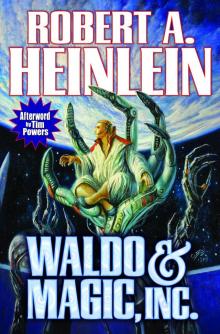 Waldo, and Magic, Inc
Waldo, and Magic, Inc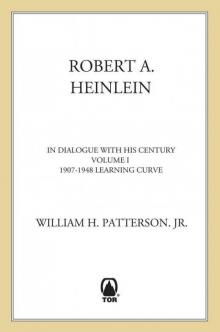 Robert A. Heinlein: In Dialogue With His Century
Robert A. Heinlein: In Dialogue With His Century Waldo
Waldo Bulletin Board
Bulletin Board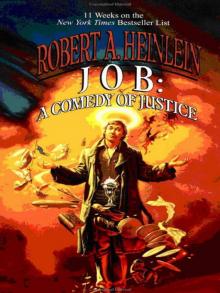 Job: A Comedy
Job: A Comedy Tramp Royale
Tramp Royale A Tenderfoot in Space
A Tenderfoot in Space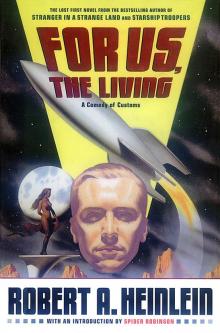 For Us, the Living
For Us, the Living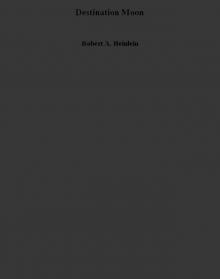 Destination Moon
Destination Moon Logic of Empire
Logic of Empire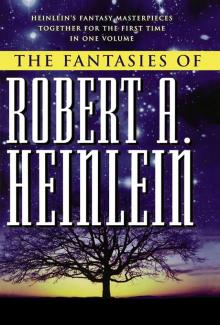 The Fantasies of Robert A. Heinlein
The Fantasies of Robert A. Heinlein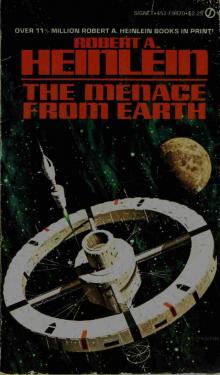 The Menace From Earth
The Menace From Earth From the Notebooks Of Lazarus Long
From the Notebooks Of Lazarus Long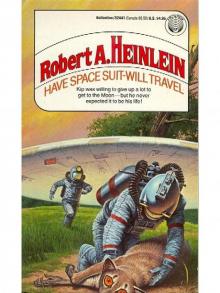 Have Space Suit - Will Travel
Have Space Suit - Will Travel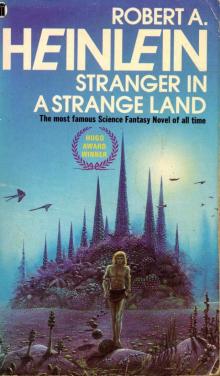 A Stranger in a Strange Land
A Stranger in a Strange Land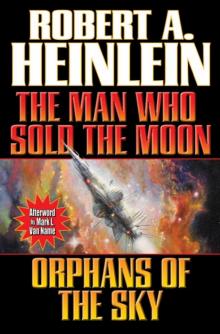 Man Who Sold the Moon / Orphans of the Sky
Man Who Sold the Moon / Orphans of the Sky